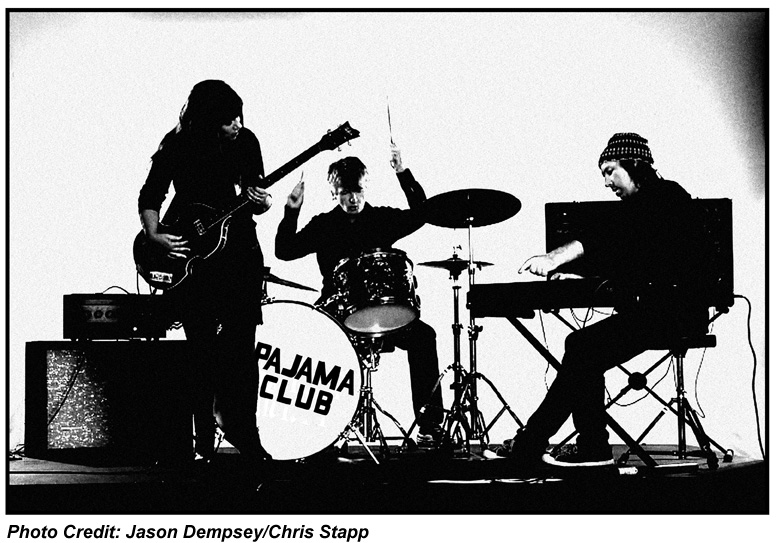5 August 2011 (Mishawaka Amphitheatre, Bellvue CO)The Mish is a favorite venue near Ft. Collins, Colorado. The unique ambiance comes from having a comfortable outdoor amphitheatre that's intimate and wide open, the Cache La Poudre River running past, and majestic canyon walls rising behind the stage. Almost every show turns into a party under the stars. Recently under new management, they've started running a bus shuttle into town to address the limited parking, so the show experience is bookended by the shuttle rides.
The trip up was filled with anticipation. Even though we were running late, everyone was laid back. When we arrived, we found that we had missed the beginning of the opening set, but it was still okay.
Similarly, the trip home was a gradual come down from the buzz of the show. People were wired moving to tired, but it was a spirited trip out of the canyon.
Sam Holt Band
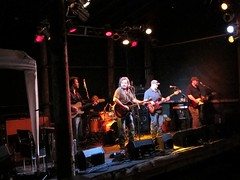
The first challenge is nailing down the band's real name. Since we had missed the opening, I didn't hear their introduction. One person told me they were the Dyrty Byrds. The show listing for the following night's show at the Bluebird in Denver has
Tori Pater Band opening. Sam Holt's Facebook page identifies them as the Sam Holt Band. Jambase has it as
Sam Holt Band, so I'll go with that. The problem is that Holt and Pater have several interlocking projects so it can be hard for an outsider to distinguish them.
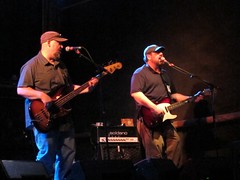
In any case, the band built their sound by standing on the Grateful Dead's shoulders. They blended a similar balance of rock, country, folk, and traditional sounds for their songs. Like modern jam bands, they extend the style by adding some structure to the song arrangements and by including more eclectic influences.
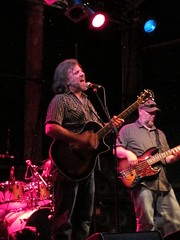
You can tell these guys play together a lot. The jams were tight and they looked like they were having a lot of fun. Reacting to each other's playing or making eye contact during their bluegrass tinged harmonies, their stage presence invited us into their circle. The band also had a great sense of dynamics, dropping the level and complexity to provide a break or stand out setting for some short solo moments.
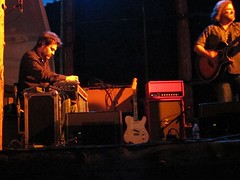 Adam Stern
Adam Stern's pedal steel was a strong part of the band's unique voice. Even the lead guitar fills seemed to echo a pedal tone sound. When Stern switched to electric guitar, he proved to be an impressive player there as well. Those songs with three guitars emphasized the band's southern rock sound.
The Sam Holt Band was a great opening act. They built the crowd energy and their sound complemented the headliner.
Stockholm Syndrome
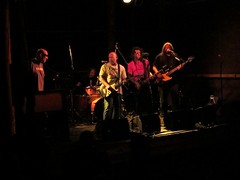 Stockholm Syndrome
Stockholm Syndrome is centered around Jerry Joseph (the Jackmormons) and Dave Schools (Widespread Panic), so their jam band cred is well established. They rounded out the band with a line up of solid performers: Danny Louis (keys), Wally Ingram (drums), and Eric McFadden (guitar). The band has maintained a fairly stable roster and developed good chemistry that takes advantage of everybody's skills.
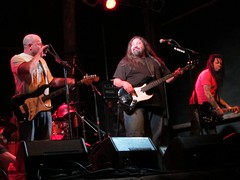
Jerry Joseph took the frontman role, driving most of the songs and singing lead. He was a charismatic player who engaged the audience. Rarely standing still, he seemed tightly wound. His energy balanced Dave Schools' more solid presence. Schools radiated a calm, centered joy on stage. Throughout the set, Schools' bass work was dependably strong, but the real surprise came when he'd occasionally cut loose and show off his amazing technical skills. Speedy runs and syncopated rhythms punctuated the rich low end harmonies he played. At the same time, his playing was also very emotional, like the ecstatic solo included in the intro jam leading into
That Which Is Coming.

The set opened with soulful sound of Danny Louis' organ on
Tight. Joseph had technical problems with his guitar for the first couple of song. Like a true professional, he stayed cool while the roadie was frantic. Schools' beatific smile graced it all. Louis' organ tone was a constant beautiful presence. Whether he was driving the groove (like on
Tight) or just adding subtle touches, the keys were a vital element of Stockholm Syndrome's sound.
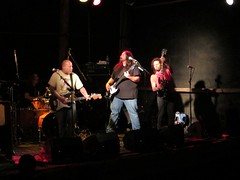
The band's cover of
Couldn't Get It Right (Climax Blues Band) has been a crowd pleaser for a long time, with a tight funky beat and tasty fills. This live version kicked off with a Stevie Wonder
Superstition vibe, before locking into its funked out rock drive.

Eric McFadden is a force of nature on stage with his own band, Eric McFadden Trio, but in Stockholm Syndrome, he reins in his stage presence to let Jerry Joseph take the lead role. That doesn't mean he's passive: he's fully engaged as he applies his monster skills to the songs. His intro to
Bouncing Very Well was stunning. Full of classical runs and nuanced phrasing, McFadden calmed the crowd into silent respect for his beautiful playing before setting up the song's happy island groove. Once the audience recognized the song, they went wild.
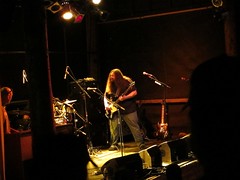 Bouncing Very Well
Bouncing Very Well rolled through some nice dynamic shifts and great jams before the guitars left the stage, leaving Dave Schools to start his bass solo with a run of lightning staccato notes, accompanied by Louis and drummer Wally Ingram. After Schools ran through his rich, melodic solo, Ingram got his chance. Ingram is always a tasteful player. In this solo, he moved beyond the standard build it up/tear it down drum solo. Instead, the basic groove persisted and never devolved into percussion chaos. Cool side syncopation filled it out, but Ingram's use of space and silence was also unique.
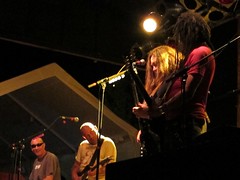
Schools came out for the encore and said,
We were trying to decide whether you guys wanted happy rock or evil rock. We decided evil rock. This is what happens when you get evil.
This set up a grinding acid rock jam. Joseph's wah-wah guitar meandered through psychedelic realms leading into a rousing version of
Road To Damascus. The song dragged out into around 20 minutes of jams, with swirling organ and trippy leads. Late in the song, Joseph slipped in a mash up of Jay Z's of
99 Problems and Led Zeppelin's
Black Dog. It was an amazing end to a long, wonderful, jam-filled set.
More photos on my
Flickr.
 Lenses Alien is an impressive follow up to 2009's Why There Are Mountains (review here). As on their debut, Cymbals Eat Guitars still restlessly shift directions, but the changes are more fluid and seem less capricious. The band continues to experiment with controlled chaos a la Wilco's Yankee Hotel Foxtrot and to explore Trail of Dead style post rock. But now they've introduced more of the raw energy of their live sound.
Lenses Alien is an impressive follow up to 2009's Why There Are Mountains (review here). As on their debut, Cymbals Eat Guitars still restlessly shift directions, but the changes are more fluid and seem less capricious. The band continues to experiment with controlled chaos a la Wilco's Yankee Hotel Foxtrot and to explore Trail of Dead style post rock. But now they've introduced more of the raw energy of their live sound.


